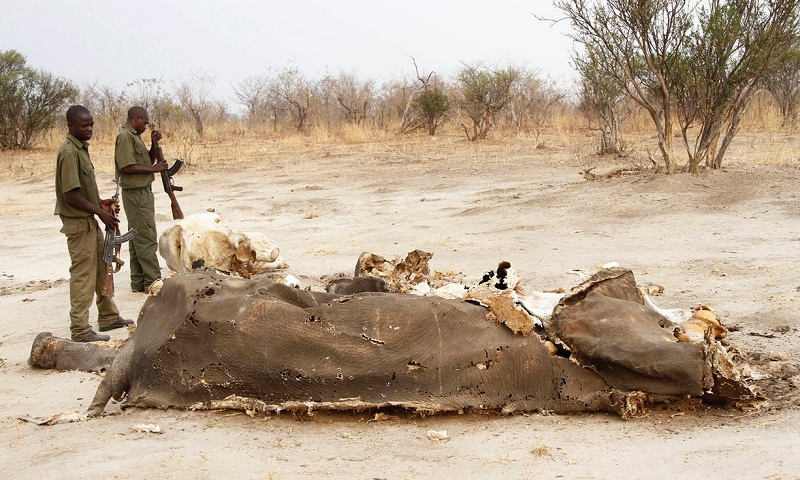Ten more elephants poisoned by poachers in Zimbabwe

The elephants were killed in the Hwange national park by what has become a common means of poaching. Ten elephants, including a mother and her young calf, have been found poisoned in and around Zimbabwe’s premier game reserve, Hwange national park. Six of the animals died in the south of the park last week; some had their tusks hacked off. The others were found outside the northern sector of the park in state forestry land. Park rangers responded quickly. A bucket of poison was found near the gruesome scene in the north and three arrests were made over the weekend. One of those arrested was found in possession of ivory. The first known case of elephant poisoning in Zimbabwe was a single massacre of over 100 elephants in Hwange national park in 2013. Since then it has become a common means of poaching – not only in Hwange but throughout the country’s protected areas, including the Zambezi valley and Gonarezhou national park. It’s not just elephants that are dying. Predators and scavengers such lions, hyenas, jackals and vultures endure a slow and agonising death after eating poisoned flesh, while other animals such as antelope and zebra have been killed by drinking from contaminated buckets, waterholes and salt licks. The poachers use a dilute sodium cyanide solution and, in some cases, paraquat, a powerful agricultural herbicide that is extremely toxic to humans as well as other animals. Roxy Danckwerts, founder of Zimbabwe Elephant Nursery, ended up with kidney and lung failure last year after handling two elephant calves that had been poisoned with paraquat in Hwange. She still has impaired breathing. The two calves, nicknamed Phoenix and Lucy, eventually died. Both cyanide and paraquat are readily available in Zimbabwe. Paraquat, although banned in the EU, is used by farmers in Zimbabwe to kill weeds and grasses, while the cyanide-based solution is common with Zimbabwe’s hundreds of thousands of informal miners. Poachers like such poisons because they enable them to kill large mammals silently, without the rifle shots that would alert rangers to their whereabouts. The Zimbabwe National Parks and Wildlife Management Authority has responded to the problem with force. Trevor Lane, co-founder of the Bhejane Trust, a non-profit organisation that monitors poaching activities in the northern sector of Hwange, says rangers have been given a clear shoot-to-kill policy from the government for any poachers they find within a national park. “Poachers lucky to be captured alive,” he adds, “are immediately given a minimum jail sentence of nine years if they are found with ivory or poison.” The government had hoped that this approach would deter poachers but the value of ivory and the desperation of many rural Zimbabweans seem to outweigh the risks. Lane told Independent Online that he expects even more elephant poisonings “because people are so poor in this bad economic situation”. A poacher would be able sell a single tusk for around £250, a small fortune for any farmer.

